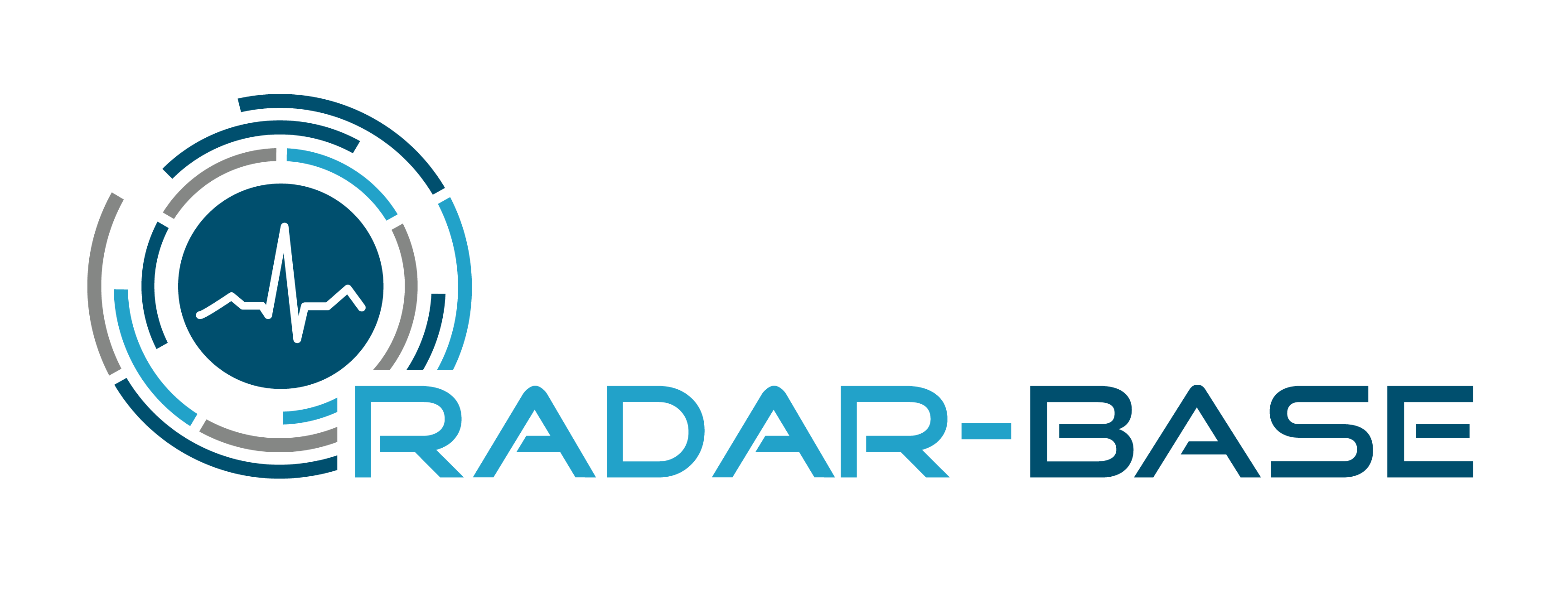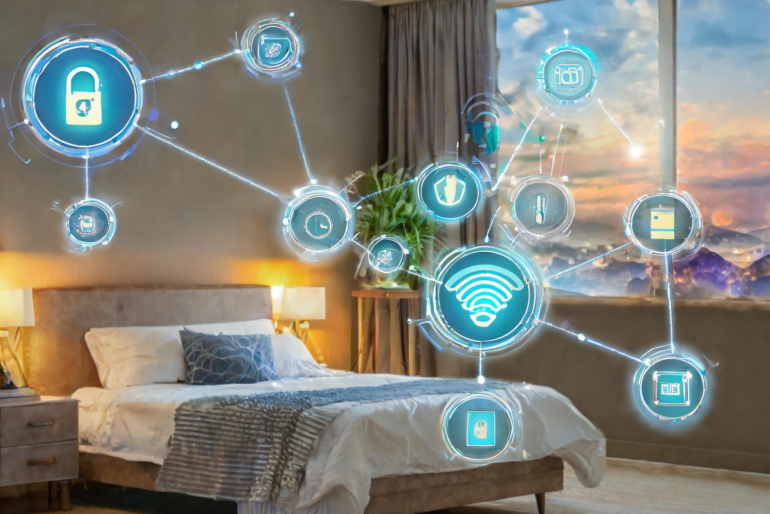
SOFTWARE SPOTLIGHT: RADAR-IoT: A Framework for Collecting IoT Sensor Data with RADAR-base
Numerous healthcare and research scenarios can be advanced by combining IoT (Internet of Things) sensor data with an open mHealth platform capable of real-time analysis at both the network edge and in the cloud. Through complementary integration of IoT sensing and the ambulatory monitoring capabilities of the RADAR-base platform, substantial progress has been made towards offering a comprehensive 360-degree visibility of the patient’s physiology, behaviour, and environment.
RADAR-IoT, Value Added
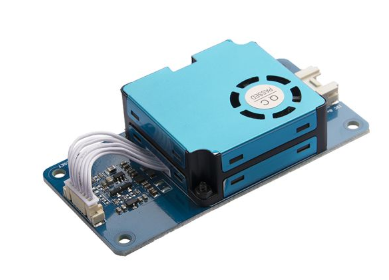
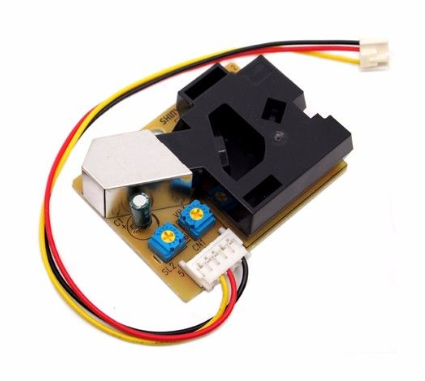
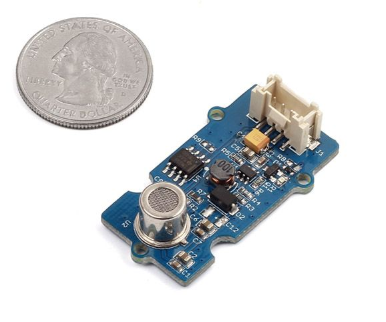
- IoT Environmental sensing:
- such as indoor air quality, temperature, humidity and toxic gas levels. Others see e.g. Grove sensors.
- Offline medical device data connected via a serial interface to the RADAR-IoT edge device
- Ambulatory passive sensing:
- Wearable devices monitor behavioural and physiological state (pRMT app, REST-connector)
- Mobile phone sensors and device interactions (i.e. pRMT)
- Active sensing:
- questionnaires and tasks, digital tests, e.g. speech sampling or physical/cognitive tests (i.e. aRMT app)
Design
RADAR-IoT (RADAR-base – Internet of Things) is a flexible and extensible IoT edge gateway framework for connecting a wide variety of sensors and supplying flexible data processing of those inputs. In addition to the RADAR-base backend, RADAR-IoT also supports uploading to InfluxDb (local or cloud), provides real-time visualization on Grafana dashboards (local or cloud) and can be easily extended to include more local and cloud destinations/sinks. The architecture of all components is based on abstract, base components, which streamlines the addition of new data processing variants and sensors. RADAR-IoT also makes use of an external industry standard publish/subscribe platform like Redis Pub/Sub or MQTT, making the RADAR-IoT framework language- and platform-agnostic.
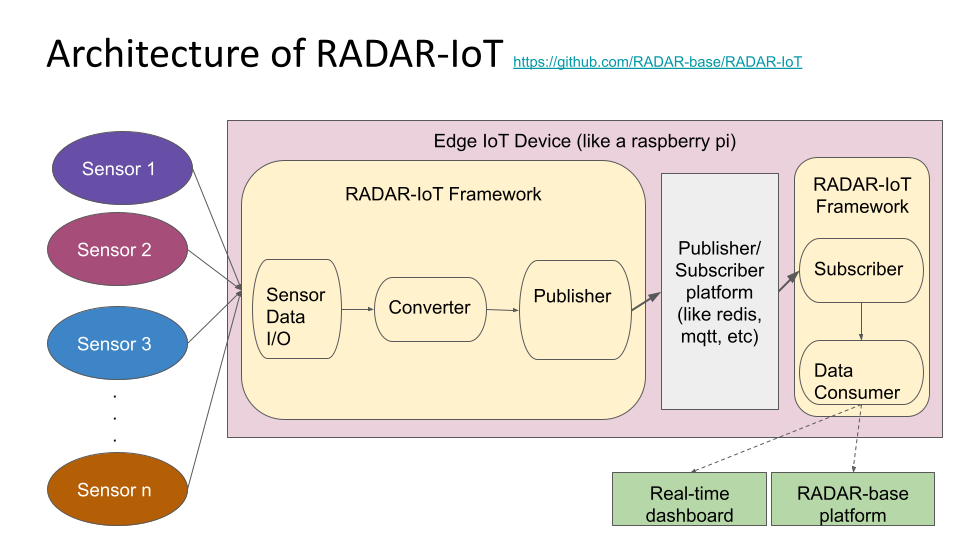
Remote monitoring in health is of increasing importance both for research and increasingly for clinical use cases; closing a full picture of a person’s health means having a handle on both internal and external factors. This confluence becomes very useful where the patient’s health can be strongly influenced by their environment. For instance, in the case of chronic pulmonary disorders (e.g. COPD, Asthma, ILD), poor air quality can have an adverse effect on the user’s health, including increased duration and intensity of coughing and wheezing.
Furthermore, for audible symptoms (coughing, wheezing, sneezing or changes in speech), continuous passive monitoring using the RADAR-IoT setup can be achieved using one or more microphones on multiple RADAR-IoT units. For this application, typically, data is processed locally on the hub device(s) to limit privacy concerns. Processed data can also be sent to the RADAR-Base mHealth platform to combine and generate composite digital biomarkers incorporating other streams of data, e.g. wearables or present aggregated information to researcher or clinician’s dashboards.
Another use case is for monitoring patients where diminished cognitive and motor capabilities have substantially affected the ability to execute typical activities of daily living (ADLs) properly, e.g. Alzheimer’s disease. In such cases, certain ADLs can be captured using motion sensors to detect when a participant is opening a door or cupboard or smart switches for using appliances, e.g. a kettle. In the case of dementia, RADAR-IoT could be used to monitor their use of everyday items to detect changes in their quality of life, while in parallel, wearables provide insight into their biology and disease progression.
Other user cases
- Automated patient vitals observations (HR, BP, Temp) and monitoring/alerting on deterioration.
- Monitoring patient sleep, integrating worn and bed or bedside sensors
- Home-based alerting or risk assessment (e.g. automated alarm if anomaly detected)
Read more:
Feature image generated with Adobe Firefly
